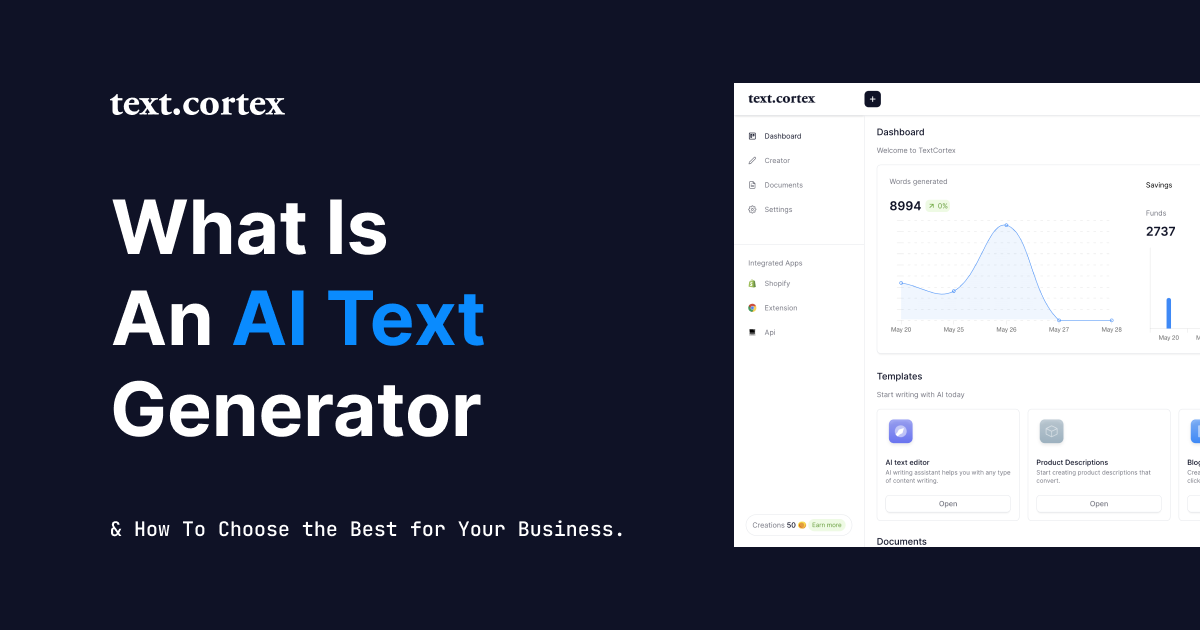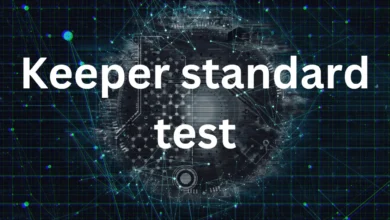AI Text Generator Content creation has become a cornerstone of online engagement in the rapidly evolving digital world. Whether it’s for blogging, marketing, social media, or academic purposes, producing high-quality content consistently can be both time-consuming and demanding. Enter the AI text generator, a groundbreaking tool that is reshaping how individuals and businesses approach writing. Leveraging advancements in artificial intelligence, these tools offer unprecedented convenience, efficiency, and creativity. In this article, we’ll explore the rise of AI text generators, how they work, their benefits, applications, and challenges.
What is an AI Text Generator?
An AI generator is a software program powered by artificial intelligence designed to create human-like text. These systems use machine learning algorithms and natural language processing (NLP) to analyze and mimic the patterns of human language. By understanding grammar, syntax, and context, an AI text generator can produce content that is coherent, relevant, and engaging.
Modern text generators, like OpenAI’s GPT models, are trained on massive datasets that include books, articles, websites, and other text-based content. This allows them to generate a wide range of text formats, from blog posts and essays to product descriptions, creative stories, and even technical documentation.
How Does an AI Text Generator Work?
The core technology behind an AI text generator is machine learning, specifically deep learning models like GPT (Generative Pre-trained Transformer). Here’s a simple breakdown of how these systems work:
- Training: AI models are trained on massive amounts of textual data. The more diverse and extensive the dataset, the better the model understands nuances in language.
- Prediction: When you input a prompt or query, the AI text generator predicts the most likely sequence of words that should follow, based on its training.
- Iteration: The model refines its output by evaluating the context, tone, and intent of the input, ensuring the generated text aligns with user expectations.
For example, if you ask an AI text generator to write an article on climate change, it will analyze your input, generate an introduction, and build coherent arguments and conclusions based on its training data.
Benefits of Using an AI Text Generator
The rise of text generators has brought numerous advantages to content creators, businesses, and everyday users. Below are some of the most significant benefits:
1. Time Efficiency
Writing quality content often requires hours of research, drafting, and editing. With an AI text generator, this process is reduced to mere minutes. Users can generate complete articles, summaries, or even email drafts in a fraction of the time it would take to write manually.
2. Cost-Effectiveness
Hiring professional writers can be expensive, especially for small businesses or startups with limited budgets. An AI text generator offers a cost-effective alternative by producing high-quality content without the need for additional personnel.
3. Versatility
From technical writing to creative storytelling, AI text generators can adapt to a variety of writing styles and formats. They can be used to draft blog posts, generate ad copy, write social media captions, and more.
4. Language Assistance
For non-native English speakers, an AI text generator serves as an excellent tool to refine grammar, enhance vocabulary, and ensure text fluency. This can be particularly useful for students, international businesses, or anyone looking to communicate effectively in English.
5. Scalability
Content creation often needs to scale to meet growing business demands. Whether you need 10 product descriptions or 100 blog posts, an text generator can handle large-scale writing tasks effortlessly.
Applications of AI Text Generators Across Industries
The versatility of text generators has enabled them to find applications across numerous industries. Below are some key areas where these tools are making an impact:
1. Digital Marketing
AI text generators are extensively used in digital marketing to create ad copy, email campaigns, social media posts, and SEO-optimized content. With the ability to analyze keywords and trends, these tools help marketers craft content that resonates with their target audience.
2. E-Commerce
Online retailers use AI text generators to produce product descriptions, customer reviews, and FAQs. This automation saves time while ensuring a consistent tone and style across all product listings.
3. Education
In the educational sector, AI text generators assist students and educators alike. They can be used to draft essays, summarize academic papers, or create study materials. Moreover, they help educators design lesson plans and assessments efficiently.
4. Customer Support
AI-powered chatbots and virtual assistants rely on text generation to interact with customers. By using an AI text generator, these systems can provide instant responses to queries, improving the overall customer experience.
5. Creative Writing
For authors and content creators, text generators offer inspiration and assistance. Whether brainstorming ideas for a novel or drafting poetry, these tools can complement the creative process.
Challenges and Ethical Concerns
While AI text generators offer immense potential, they are not without challenges and ethical concerns. Some of these include:
1. Plagiarism
Since AI text generators are trained on existing content, there is a risk of inadvertently producing text that closely resembles copyrighted material. Ensuring originality remains a critical challenge.
2. Misinformation
If not properly guided, an text generator might produce inaccurate or misleading content. Users must review and fact-check the output to avoid spreading misinformation.
3. Loss of Human Touch
Although AI-generated text is coherent and contextually relevant, it often lacks the emotional depth and creativity that human writers bring to the table. Overreliance on AI tools may result in generic or impersonal content.
4. Bias
AI models are only as unbiased as the data they are trained on. If the training data contains biased information, the AI text generator may inadvertently reproduce such biases in its output.
Best Practices for Using AI Text Generators
To maximize the benefits of an AI text generator while addressing its limitations, here are some best practices:
- Provide Clear Prompts: The quality of the output depends heavily on the input. Providing detailed and specific prompts helps the AI generate more relevant content.
- Review and Edit: Always review and edit the generated text to ensure accuracy, originality, and tone alignment with your goals.
- Combine Human and AI Efforts: Use AI as a tool to complement, not replace, human creativity. A hybrid approach ensures the best results.
- Monitor Ethical Use: Avoid using AI-generated content for deceptive purposes, such as producing fake news or plagiarizing existing work.
The Future of AI Text Generators
The evolution of AI text generators is far from over. As AI technology continues to advance, we can expect even more sophisticated tools capable of understanding complex nuances in language and producing highly personalized content. Future AI models may offer improved creativity, greater contextual awareness, and better integration with other digital tools.
Additionally, the integration of AI text generators with voice technology and augmented reality could open up new possibilities for interactive storytelling, virtual training, and immersive learning experiences.
Conclusion
The AI text generator’s rise has undeniably transformed how we create and consume content. From saving time and reducing costs to enabling scalable content production, these tools offer immense benefits for individuals and businesses alike. However, as with any technology, responsible use is crucial. By combining the efficiency of AI with the creativity and critical thinking of human writers, we can harness the full potential of AI text generators to shape the future of content creation.
As we move forward, one thing is clear: the AI text generator is not just a tool—it’s a catalyst for innovation in the digital age. Whether you’re a marketer, student, or entrepreneur, this technology has the power to redefine how you approach writing and communication.




